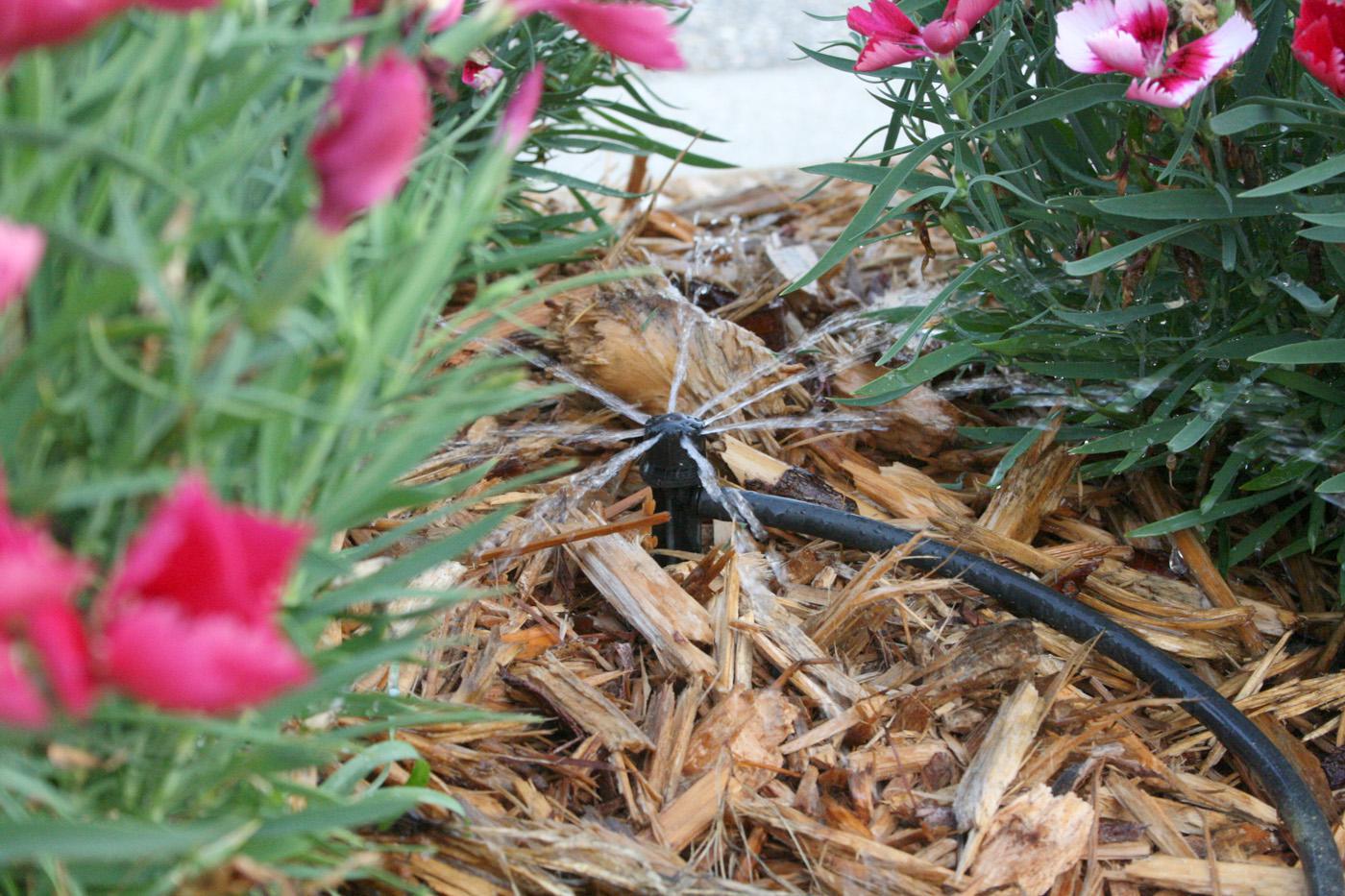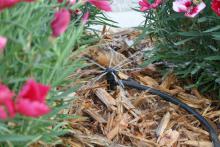Information Possibly Outdated
The information presented on this page was originally released on June 15, 2011. It may not be outdated, but please search our site for more current information. If you plan to quote or reference this information in a publication, please check with the Extension specialist or author before proceeding.
Micro-irrigation helps home gardens thrives
To combat the dry conditions creating problems for home gardens and landscapes, many Mississippi gardeners need to water their plants a lot more than usual.
Generally, applying 1 to 1 1/2 inches of water per week using overhead sprinklers will leave the root zones of your plants moist enough to encourage optimum growth. This method of watering works for annuals and groundcovers, as well as perennials, shrubs, trees and lawns.
We generally water garden plants based on soil moisture; when the soil feels dry, we water thoroughly. But this drench and dry method can subject plants to unseen stresses that have very visual results. Poor watering practices can lead to flowering delays and poor vegetable performance.
A much better approach is to maintain soil moisture with slow and steady watering. Micro-irrigation, also called drip or trickle irrigation, is an easy option to reach this goal. When you keep the root zone moist, plants are not stressed and can use up to 70 percent less water compared with using overhead sprinklers. This makes a big difference in the monthly water bill.
Micro-irrigation systems supply water directly to the soil around the plants through the use of emitters. Emitters regulate the amount of water being applied, usually measured in gallons per hour (gph). Emitter rates vary from 1/2 gph to 10 gph based on the water needs of a particular plant.
Micro-irrigation is a very effective method of watering plants in containers. These systems are easy to install. The best way to get started is to buy a starter kit that contains tubing, emitters, timers and tools. Kits are available at most home improvement stores and garden centers, and you can easily add additional tubing and emitters to expand the system.
If you have an existing irrigation system using pop-up sprinklers, conversion kits are available to convert these to micro-irrigation.
Soaker hoses are another effective method of micro-irrigation. Soaker hoses “sweat” along their entire length, delivering from 1/2 to 3/4 gallon of water per minute for each 100-foot section.
Let the soil conditions in your garden or landscape dictate how you water your plants. Sandy soils drain faster and may require more irrigation. Soils with high clay content will not drain as quickly and need less frequent irrigation.
Amend your landscape beds with 3 to 4 inches of good composted organic matter to improve drainage. Adding organic matter slows drainage in sandy soils and increases it in clay soils.
Generally, the best time to water is in the early-morning hours when temperatures are cooler and the soil can absorb the water before the heat of the day. Watering during the middle of the day is inefficient as some of the water evaporates before it can do any good.
Plants, like people, have preferences, especially concerning water. All gardeners should know when their plants need water and how much to give them. Too much water encourages root rot problems; too little water leaves plants wilted and lifeless. The easiest way to know how much water a plant needs is to read the label that came from the nursery.










